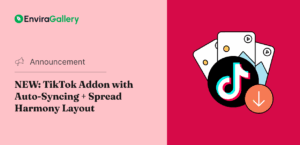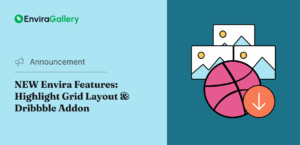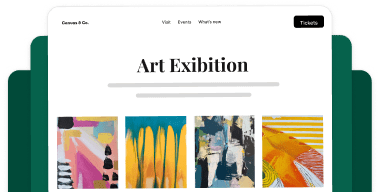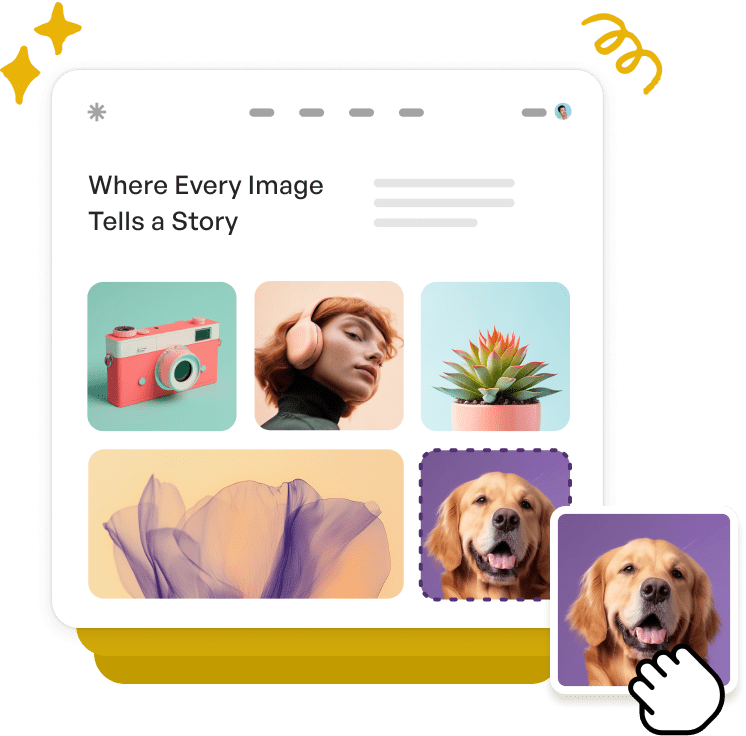When I launched my first website, I didn’t give much thought to the best image file formats—I just uploaded what looked good on my screen. But I quickly ran into problems. I struggled to preserve transparency and crisp quality in my logo while making it scale properly across devices, ended up with pixelated images in my portfolio, and ignored how my oversized photos were dragging down page speed.
Those rookie mistakes taught me that choosing the right format isn’t just about visual quality—it directly impacts performance, design, and professionalism. Since then, I’ve helped countless others improve their websites through better content, smarter strategy, and practical optimization tips.
One issue that comes up time and again is file formats. It’s easy to assume one-size-fits-all, but different formats serve different purposes. Some are built for the web, others for print, editing, or long-term storage. That’s why I created this guide—to help you make informed choices that balance quality, performance, and usability, no matter how or where you’re working with images.
In this article, I’ll cover the most essential photo file formats in use today—from familiar options like JPEG and PNG to modern web formats like WebP and AVIF, and specialized formats like TIFF and DNG. You’ll learn how each format works, when to use it, and what trade-offs to consider.
Quick Guide: Digital Photo Formats
| JPEG ( .jpeg , .jpg) | Lossy compression | No transparency | Best for everyday photography and web use |
| PNG ( .png) | Lossless compression | Full and partial transparency | Best for images with text or transparency |
| WebP ( .webp) | Lossy/Lossless compression | Full and partial transparency | Best for web-optimized images |
| AVIF ( .avif) | Lossy/Lossless compression | Full and partial transparency | Best for high-efficiency web images |
HEIF (.heif) HEIC ( .heic) | Lossy compression | Full and partial transparency | Best for Apple photo storage |
| GIF ( .gif) | Lossless compression | Full transparency only | Best for simple animations |
| SVG ( .svg) | Vector (no compression | Transparency via CSS | Best for scalable icons, logos |
DNG (.dng)RAW ( varies by camera) | No compression | No transparency | Best for professional photography and editing |
| PSD ( .psd) | No compression | Transparency via layers | Best for ongoing edits in Photoshop |
| TIFF ( .tif , .tiff) | Lossless compression | Full and partial transparency | Best for archiving, pro printing |
What’s The Best Format for Your Pictures?
The right format depends entirely on your specific needs:
- For everyday photography: JPEG offers a good balance between quality and file size.
- For professional work: RAW/DNG for shooting and TIFF or PSD for editing.
- For high-quality web graphics with transparency: PNG for raster images, SVG for vector graphics.
- For optimized web photos: WebP or AVIF for modern websites, with JPEG fallbacks.
- For web animations: GIF for simple animations, WebP for better quality, or consider video formats for more complex motion.
- For logos and icons: SVG whenever possible.
- For long-term archiving: TIFF or DNG.
- For printing: High-quality JPEG or TIFF for pro-level.
10 Best File Formats for Photos
1. JPEG

JPEG stands for Joint Photographic Experts Group. This widely used format has become the default for storing photos across devices, and most images you encounter online are JPEGs.
JPEGs come in varying quality levels—low, medium, and high. Lower quality JPEGs undergo more compression, reducing file size but sacrificing image quality. For high-quality images, you’ll want to select a less compressed JPEG option.
JPEG images excel for social media sharing, email attachments, and website use. These files take up minimal space on memory cards and storage devices. However, be aware that saving as JPEG can degrade image quality, especially after multiple edits and saves.
When to Use JPEG Image Format:
- For complex images with many colors, like photographs
- To compress detailed images while maintaining reasonable quality
- For print (when high-quality settings are used)
- When storage space is limited
2. PNG

PNG (Portable Network Graphics) is a versatile format that plays a crucial role in photo editing. Unlike JPEGs, PNGs support transparency—both complete transparency and partial transparency for effects like drop shadows.
This format preserves image quality and details without compression artifacts, but that quality comes at the cost of larger file sizes. This makes PNGs ideal for detailed images or those with text and images where transparency is needed, like logo watermarks.
When to Use PNG Image Format:
- For images requiring transparency
- For logos and graphics with text
- For web images where quality is more important than file size
- To maintain the details of an image when you have sufficient storage
3. WebP

WebP is a modern image format developed by Google, and optimized specifically for web use. It offers both lossy and lossless compression, providing file sizes about 25-35% smaller than comparable JPEGs while maintaining similar visual quality.
According to Google’s own data, WebP lossless images are 26% smaller than PNGs, and WebP lossy images are 25-34% smaller than JPEGs at equivalent visual quality. This format also supports animation and full transparency.
Browser support for WebP has grown significantly, with all major browsers now supporting the format, making it an excellent choice for web-optimized images.
When to Use WebP Image Format:
- For website images to improve loading speeds
- When you need transparency but want smaller file sizes than PNG
- For animated images that need better compression than GIF
- When delivering images to modern browsers
4. AVIF

AVIF (AV1 Image File Format) is one of the newest formats on the scene, derived from the AV1 video codec. It offers exceptional compression efficiency while maintaining high image quality.
Studies show AVIF files are approximately 50% smaller than JPEGs of similar quality and about 20% smaller than WebP. The format supports HDR, wide color gamut, and both lossy and lossless compression.
While browser support was limited in the past, AVIF is now widely supported by most modern browsers, including Chrome, Firefox, Safari, and Edge. However, it’s still a good idea to provide JPEG or WebP fallbacks for maximum compatibility.
When to Use AVIF Image Format:
- For cutting-edge web optimization
- When file size reduction is a top priority
- For HDR photography display
- When targeting browsers with AVIF support
5. HEIF/HEIC

HEIF (High Efficiency Image Format) is Apple’s default photo format, and HEIC is the specific container Apple uses for storing photos on iOS devices when the High Efficiency setting is enabled in the Camera app.
While it’s excellent for storage on Apple devices, HEIF images may require conversion before uploading to websites or using them in non-Apple workflows due to limited support on some platforms.
When to Use HEIF Image Format:
- When storage space is limited
- To retain high-contrast image details
- For storing original camera metadata
- When working within Apple’s ecosystem
6. GIF

GIF (Graphics Interchange Format) has a limited color palette (256 colors), which makes it unsuitable for most photographs containing color gradation. However, its claim to fame is supporting simple animations, making it popular for memes and short clips on the web.
It’s similar to PNG in that is preserves image quality with lossless compression, but unlike PNG, it doesn’t support partial transparency—meaning shadows and soft edges won’t render properly.
When to Use GIF Image Format:
- For simple images with limited colors, like icons
- For short animations and motion graphics
- For web content that needs to be lightweight
- When full (not partial) transparency is needed
7. SVG

SVG (Scalable Vector Graphics) is fundamentally different from the other formats mentioned because it’s vector-based rather than raster-based. Instead of storing information about pixels, SVG stores mathematical formulas that describe shapes, lines, and colors.
This makes SVG perfect for logos, icons, and illustrations that need to scale to any size without losing quality. SVGs are typically very small in file size and can be animated and manipulated with CSS and JavaScript.
When to Use SVG Image Format:
- For logos, icons, and simple illustrations
- When images need to scale to different sizes without quality loss
- For web graphics that need to be animated
- For interactive elements on websites
- When file size needs to be extremely small
8. RAW and DNG

RAW formats (including DNG—Digital Negative) are the gold standard for professional photography. These formats store all the unprocessed data captured by your camera sensor, giving you maximum flexibility for post-processing.
DNG, created by Adobe, is a standardized RAW format that offers better compatibility across software compared to proprietary camera RAW formats (like Canon’s CR3 or Nikon’s NEF). The tradeoff for this impeccable quality is large file sizes and longer processing times. A typical RAW file can be 2-5 times larger than a high-quality JPEG of the same image.
When to Use RAW/DNG Image Format:
- For professional photography work
- When maximum editing flexibility is needed
- When storage isn’t a limiting factor
- When the exact quality and detail of the original shot must be preserved
9. PSD

PSD (Photoshop Document) is the native file format for Adobe Photoshop. When saving from Photoshop, the program defaults to this format, which preserves all layers, adjustments, and editing capabilities.
This format isn’t suitable for web use or client delivery due to its specialized nature and large file size. However, it’s excellent for maintaining editing flexibility over time and preserving the highest quality version of your work.
To fully benefit from PSDs, avoid flattening your layers before saving—merging layers will limit your ability to make non-destructive edits later. The typical PSD file is substantially larger than a flattened image, but the trade-off is worth it for maintaining edit flexibility.
When to Use PSD Image Format:
- For images you plan to edit again in the future
- To preserve layers and adjustment settings
- For retaining maximum quality and editability
- When working within Adobe’s creative ecosystem
10. TIFF

TIFF (Tagged Image File Format) is widely used by professional photographers and designers. These files maintain complete image quality without compression, making them ideal for post-processing and archiving storage.
With TIFF files, you can work with any photo editing software and later convert to other formats as needed. Many professionals store uncompressed TIFFs as their master files on external drives, ensuring they always have the highest quality version available for future edits or reprints.
According to data from the Smithsonian Institution Archives, TIFF remains the recommended format for long-term digital preservation of photographic materials due to its lossless compression and wide compatibility.
When to Use TIFF Image Format:
- For archiving images without quality loss
- For professional printing
- For images that will undergo multiple editing stages
- When creating master files for long-term storage
Optimize Your Photos with Envira Gallery
When it comes to organizing and displaying images on your WordPress website, having the right tools makes all the difference. Envira Gallery is a standout solution for photographers and content creators alike.

Envira Gallery provides a comprehensive solution for displaying, organizing, and optimizing your images regardless of format. Whether you’re working with high-quality JPEGs, transparent PNGs, or even next-generation formats like WebP, Envira Gallery handles them all with ease.
Here’s how Envira Gallery helps you make the most of your images:
- Built-In Image Compression: Reduces file size without losing quality
- Mobile-Responsive Galleries: Ensures images look great on any device or screen size.
- Supersize Lightbox Images: Showcase high-res images in their original dimensions to ensure the best quality.
- Lazy Loading: Enhance browsing speed by loading images as visitors scroll.
- Pagination: Split large galleries into pages for quicker loading and a smoother experience.
- Protection for Your Photos: Includes watermarking and image protection features.
- SEO Benefits for Images: Improves discoverability in search engines.
- Albums and Tags for Organization: Create a logical structure to organize your images and galleries.
- Sync with Adobe Lightroom: Direct integration for publishing galleries from Lightroom.
- And lots more!
Envira Gallery is the perfect solution for photographers, bloggers, and businesses who want to showcase their images in the best possible way.
Frequently Asked Questions
What image format has the highest quality?
RAW formats (including DNG) and TIFF provide the highest quality as they store either all the unprocessed sensor data (RAW) or uncompressed image data (TIFF). These formats preserve every detail captured by your camera without compression artifacts.
Which image format is best for websites?
For modern websites, JPG, PNG, and WebP are all good choices for photographs. They key is finding the balance between compression and quality. AVIF offers even better compression but has less universal support while SVG is best for logos and icons.
What’s the difference between vector and raster image formats?
Raster formats (JPEG, PNG, TIFF, etc.) store information as a grid of pixels and lose quality when photos are scaled. Vector formats (SVG) store images as mathematical formulas, allowing them to scale to any size without quality loss, making them ideal for logos and illustrations.
What’s the difference between lossy and lossless compression?
Lossy compression (used in JPEG, WebP lossy, and some glossy compression settings) permanently discards some image data to reduce file size, which can degrade quality—especially with repeated saves. Lossless compression (used in PNG, TIFF, and WebP lossless) preserves all image data while reducing file size, maintaining original quality no matter how many times you save the image.
Can I convert between different image formats?
Yes, most image formats can be converted to other formats using photo editing software. However, converting from a lower-quality format (like JPEG) to a higher-quality format (like TIFF) won’t recover any previously lost data.
What image format should I use for printing photos?
For home printing, high-quality JPEGs are usually sufficient. For professional printing or large-format prints, RAW formats like DNG and TIFF are recommended to ensure maximum detail and color accuracy.
How do I use next-gen formats like WebP and AVIF on my website?
Most modern content management systems (like WordPress) offer direct support or plugins to automatically convert your images to WebP or AVIF and serve them to compatible browsers. For custom websites, you can use the HTML <picture> element with multiple <source> tags to provide different formats with appropriate fallbacks.
I hope this guide helped you understand the best image formats and their features. If you’re working with WordPress and find that your images load slowly or your sized aren’t correct, check out WordPress Image Sizes: A Beginner’s Guide to Getting It Right.
Not using Envira Gallery? Get started today!
Don’t forget to check out our blog and follow us on X (Twitter) for the best photography tips, resources, and WordPress tutorials.

















What format for people pictures is hardest to edit (to protect our client’s pictures from being doctored) if its downloaded?
Can one build a protection against pictures being downloaded or file format that would discourage downloading?
@ Syed kamal;
Hardest to download: .svg (Scaled Vector Graphics). By far. They don’t work like your average image and non professional users will not know what to do with ’em. Your average run of the mill software will not display it, but it actually has huge benefits for online web uses.
Plus, since it can be used as a DOM node-based API it kind of looks horrible and very, VERY discouraging to a lot of potential image thieves 😉
But if it is a format for you really depends on what image you want to display.
There is however no format to prevent downloading and editing of your images. When you put them on display, they will always remain vulnerable to piracy. You can watermark them to make them useless for unauthorized uses (like the big image selling sites tend to do), but if you use them for aesthetic purposes on your site, you probably don’t want to watermark them.
Ps -> About this article though, thanks a billion! Just the clear information I needed to determine the format for my scanned images ^^
Thank you for all the insight.
I have a question pertaining to saved image files. When they are saved with the prefix cross0. followed by a set of numbers .jpg, what does the cross0 mean or stand for?
what file format recroded original date of save.creation? i know it was simple gif tiff or png
Your article is great and useful, if your image is taken in jpg format and wants to convert to png.
Hello dear,
Can one build protection against pictures being downloaded or file format that would discourage downloading?
Hey Wicky, Envira Gallery can do that.
I’m new to this and I don’t know how to put a water mark or my name on all my photos, from this Camera?
Hey Debb, check out our article on How to Add A Watermark with Photoshop and Lightroom http://enviragallery.com/how-to-add-a-signature-watermark-with-photoshop-and-lightroom/
i think PNG format is a good one for photography
I think PNG = Portable Network Graphics is better and helpful .
This is such a helpful guide! I always got confused about which image format to use, but your explanations made it super clear. I especially liked the quick guide chart—so useful! Thanks for breaking everything down in a way that’s easy to understand.